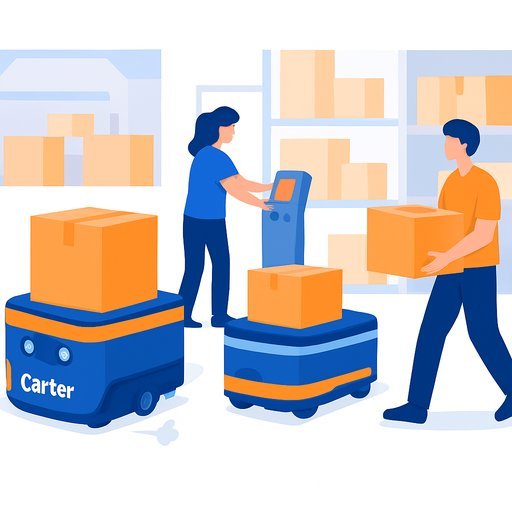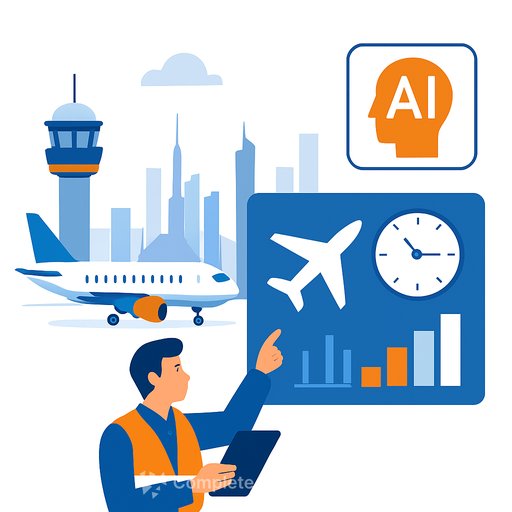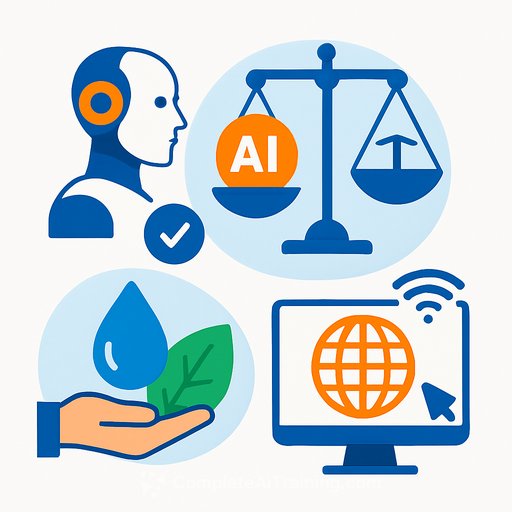Agentic AI: Your supply-chain sidekick for faster, smarter, more resilient operations
Supply chains run on moving targets: shifting demand, tight margins, and more data than most teams can reasonably process. Agentic AI changes the pace. It takes on the hard, messy tasks so your people can run the playbook, not wrestle with spreadsheets.
Think of agents as autonomous teammates. Give them a clear mission, the right data access, and guardrails-and they execute, learn, and coordinate across processes without constant hand-holding.
What AI agents actually do in SCM
AI agents are autonomous software programs that parse data, decide what to do, and take action across multi-step workflows. In supply chain, that means less manual triage and fewer dropped balls when variables shift mid-day.
- Track customer orders and ensure inventory is available to fulfill them.
- Optimize physical placement of inventory inside the warehouse.
- Sync dock times with trucks so transport is ready when goods move.
- Manage staffing so the right people are on shift for inbound and outbound volumes.
- Adjust schedules on the fly for equipment failures or carrier delays.
- Source and validate vendors by availability, price, lead time, and risk.
Agents can work in parallel or in sequence, effectively creating a fleet of virtual coordinators. Done right, they bring consistency to processes that are prone to human error and make it easier to scale without being constrained by headcount.
Why this goes beyond traditional SCM software
Conventional tools follow scripts. They're solid for predefined tasks but struggle the moment a scenario falls outside the template. Agents are different. Guided by AI models, they can reason through unfamiliar situations, propose options, and continue working across interdependent workflows.
That means fewer handoffs, fewer "stuck" tickets, and more problems resolved before they grow into service failures. It also means your team spends time on decisions that truly need judgment, not on low-level coordination.
Getting started: scope, build, or buy
Pick a clear scope first. For single-process needs (like inventory monitoring), an off-the-shelf agent may be enough. For multi-process orchestration-inventory, transport, and labor working together-you'll likely need a custom setup.
If you have strong in-house engineering and AI talent, you can build. If not, work with an implementation partner that brings both agent design experience and operational context. The goal isn't "more AI." The goal is fewer stockouts, tighter OTIF, and predictable cost-to-serve.
Guardrails and good practice (what leaders should require)
- Start with a POC. Prove reliability in a sandbox before agents touch production systems.
- Erect guardrails. Limit data access and allowed actions. Enforce least privilege and clear rollback paths.
- Keep humans in the loop for high-stakes steps. Example: require approval before shipping orders above a value threshold.
- Ensure data quality. Agents are only as good as the inventory, order, and vendor data they read.
- Monitor and manage costs. Track LLM token usage and data pull fees. Use cheaper models where quality holds.
For governance and risk, anchor your approach to established frameworks. The NIST AI Risk Management Framework is a practical reference for policy, oversight, and controls.
What to measure (so you know it's working)
- Service: OTIF, order cycle time, promise accuracy, fill rate, stockout incidents.
- Cost: cost per order, labor utilization, detention/demurrage, LLM cost per resolved exception.
- Quality: data error rate, rework, exception resolution time, audit compliance.
- Scalability: throughput per FTE, number of automated workflows, peak handling without overtime.
A simple 90-day rollout plan
- Weeks 1-2: Pick one painful process (e.g., dock scheduling) and define success metrics and guardrails.
- Weeks 3-6: Build a POC agent in a sandbox with synthetic or mirrored data. Run edge cases. Add human approvals for risky steps.
- Weeks 7-8: Pilot on a narrow slice of live volume during low-risk windows. Track KPIs daily.
- Weeks 9-10: Optimize prompts, models, and data access. Cut token costs where quality allows.
- Weeks 11-12: Expand scope to a second workflow and introduce cross-agent coordination.
Build vs. buy: questions to ask vendors
- What actions can the agent take, and how are those actions restricted?
- How do you log decisions and provide audit trails?
- Which models are supported, and how do you switch to a lower-cost option without rework?
- How do you handle data quality checks and schema changes?
- What's your fail-safe if an API goes down or data is stale?
The path forward
Agentic AI is practical here and now. Start small, keep humans in the loop where it matters, and scale with clear metrics and controls. The real win is a supply chain that moves faster, breaks less, and adapts without drama.
If you want to upskill your team on AI automation and agent workflows, explore this manager-friendly resource: AI Certification for Automation.
Your membership also unlocks:






